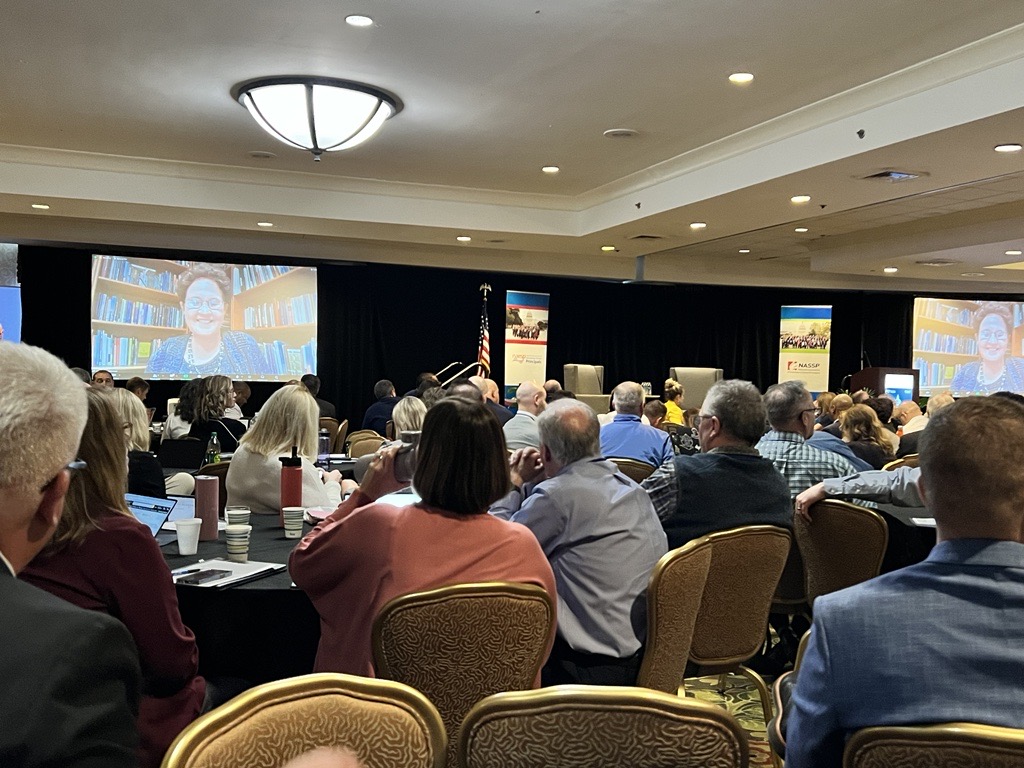State of the Union in K-12 Education
By: Krysia Gabenski, Editorial Director, NAESP
We're at a crossroads in education where we need to embrace innovation and focus on a whole-child approach to learning. Learning Policy Institute's Linda Darling-Hammond outlines strategies to do just that.

“This is a challenging time in American education, and you are the glue holding it together,” said Linda Darling-Hammond as she welcomed—via Zoom—principals and assistant principals to the 2024 National School Leaders Advocacy Conference and opened her “State of the Union in K-12 Education” session.
Where We Are
Over the past few years, we’ve experienced a public health crisis, an economic crisis, a civil rights crisis, and a climate crisis. And after the COVID-19 pandemic, in school communities, we’ve seen greater child poverty and homelessness, a widening achievement gap, chronic absenteeism, declining enrollment, and deepening staff shortages.
But, said Darling-Hammond, the pandemic also brought about greater technology capacity, greater appreciation for social-emotional learning (SEL), and a lot of innovations like new school designs—and we need to build on this momentum to create the schools of the future that will adequately and effectively meet the needs of all students.
“We have to be creating the new normal,” said Darling-Hammond, “not getting back to the old normal.”
Ongoing Challenges to Education
Darling-Hammond outlined new knowledge and skills that require changes to schools. Those are curriculum that builds learning ability, attention to SEL, and assessments beyond traditional practices.
But how do we support systemic changes? The Learning Policy Institute Restarting and Reinventing Schools report says that we need to focus on reinvention in education because current schools, designed in the early 1900s, weren’t set up to support relationships, a whole child approach, deep learning, personalized supports, use of technology, and equitable opportunities.
The results are deeply problematic today, says Darling-Hammond, who outlines the following effects of an outdated school system design on student learning:
- Structures are not designed for students to be well-known or well-supported—or for teachers to work and plan with each other.
- Teachers with large class sizes are isolated in egg-crate classrooms and students rotated through to be stamped with a standardized curriculum.
- Standardized curriculum with rigid pacing guides prevents teachers from meeting student needs.
- Focus on narrow tests undermines powerful, engaging learning and whole child development.
- Unequal treatment is baked into the system.
A Whole Child Approach
But with school leaders at the helm of schools, said Darling-Hammond, principals and assistant principals are actively leading the charge to overcome these barriers to focus on the whole child.
“We’re at a moment where a whole-child approach is essential,” said Darling-Hammond.
She highlighted a five-step whole-child approach to student learning, based on research from Learning Policy Institute. Those steps are:
- Resources aimed at students’ needs;
- 21st century curriculum and assessment;
- Skilled teachers and leaders;
- Wraparound supports; and
- Early childhood education.
To do this, schools need to be redesigned to address the new “3 R’s”—relationship-centered; responsive to student interests, talents, and needs; and restorative practices, said Darling-Hammond. And they need to structure schools that promote positive relationships through small learning communities, looping, block scheduling, advisory systems, and school-family connections.
Darling-Hammond identifies increasing educators’ salaries, expanding loan forgiveness and service scholarships, expanding the affordability and availability of high-retention preparation pathways with extended internships and residences; and providing high-quality mentorships as key policy actions to address the educator shortage—which plays a large role in student learning and well-being.
As school leaders engage with their legislators during the National School Leaders Advocacy Conference—and beyond, when they’re back in their communities—Darling-Hammond recommends that advocates encourage policy makers to think systemically and substantially when making funding decisions that directly affect schools, educators, and students.
Follow #PrincipalsAdvocate for updates and add your voice to amplify the message to prioritize systemic changes in schools through a whole-child approach.
